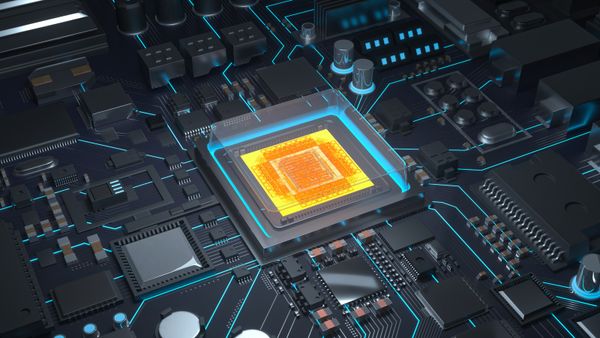It is true that the G4 is faster than the Pentium III on many tasks. For example, if you run the SETI@home screensaver (which uses lots of floating-point calculations to perform signal processing operations on radio telescope data), a G4 running at 500 megahertz (MHz) will produce a result set in about half the time of a Pentium III running at 700 MHz. This is a remarkable difference in processing capability.
When creating a microprocessor, the designer gets to make millions of decisions. A basic limit in the design is the number of transistors that will fit on a chip, so the designer is trying to make decisions that obtain the best performance from those transistors. The designer may also have to worry about backward compatibility with older instruction sets and looming release dates.
Advertisement
For example, the Intel 8080 processor took something like 80 clock cycles to multiply two 8-bit numbers. It took so long because the number of transistors was severely limited at the time the 8080 was released. Today's processors can often multiply two pairs of 32-bit numbers in a single clock cycle. The difference between then and now is the number of transistors -- a greater number of transistors allows more to happen in a single clock cycle.
If you look at Motorola's documentation, it says that the G4 processor features:
- Two integer units
- Double-precision floating-point unit
- Vector unit
- Load/store unit
- System unit
- Branch processing unit
These execution units feed off of a 128-bit internal bus. The feature that gives the G4 most of its speed in SETI@home processing is the double-precision floating-point unit. The G4 can complete one double-precision calculation every clock cycle, while the Pentium III cannot.
The G4 also features an interesting vector processing unit. Applications must be specially coded to take advantage of the vector processor, which allows them to perform certain mathematical operations very quickly. A vector processor executes the same operation on multiple pieces of data at the same time. In the G4, up to eight simultaneous operations can execute in a single clock cycle in the vector unit. This sort of processing power is what makes the G4 so fast when working with math-intensive applications like Photoshop that have been coded to take advantage of vector processing. The Pentium III features a vector processing capability as well, but it is not as powerful.
Advertisement

